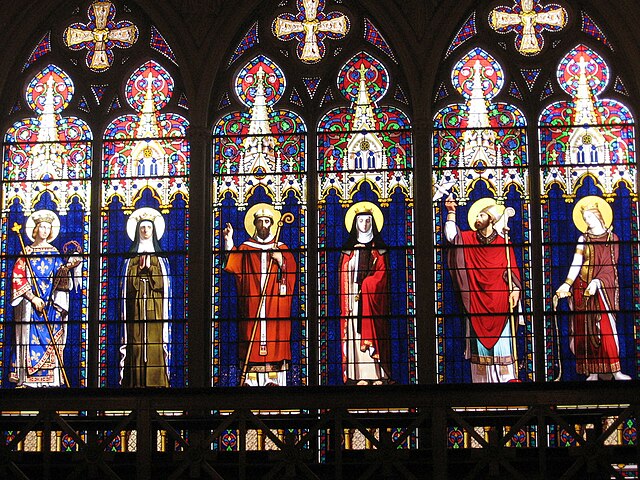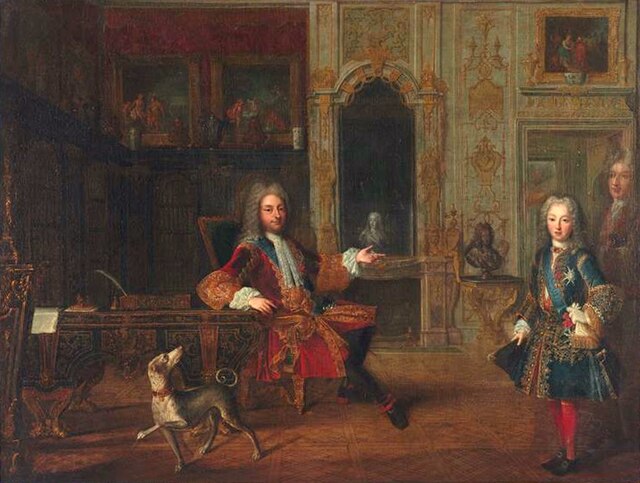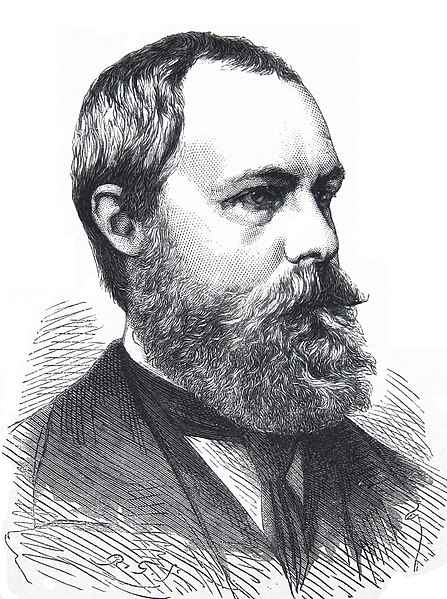The Royal Chapel of Dreux situated in Dreux, France, is the traditional burial place of members of the House of Orléans. It is an important early building in the French adoption of Gothic Revival architecture, despite being topped by a dome. Starting in 1828, Alexandre Brogniart, director of the Sèvres porcelain manufactory, produced fired-enamel paintings on large panes of plate glass for King Louis-Philippe I, an important early French commission in Gothic Revival taste, preceded mainly by some Gothic features in a few jardins paysagers.
Chapelle royale de Dreux
Gothic Revival glass by the Sèvres porcelain manufactory
Monument to King Louis-Philippe (1773–1850) and his wife Maria Amalia (1782-1866)
Monuments to Prince Ferdinand Philippe, Duke of Orléans (1810-1842) and his wife Duchess Helen of Mecklenburg-Schwerin (1814-1858)
The 4th House of Orléans, sometimes called the House of Bourbon-Orléans to distinguish it, is the fourth holder of a surname previously used by several branches of the Royal House of France, all descended in the legitimate male line from the dynasty's founder, Hugh Capet. The house was founded by Philippe I, Duke of Orléans, younger son of Louis XIII and younger brother of Louis XIV, the "Sun King".
Louis XIV and his younger brother Le Petit Monsieur
Philippe II d'Orléans with his Protégé, Louis XV
Louis XVI's execution. His cousin, Philippe Égalité, voted for his execution
Louis-Philippe Albert d'Orléans, Comte de Paris








